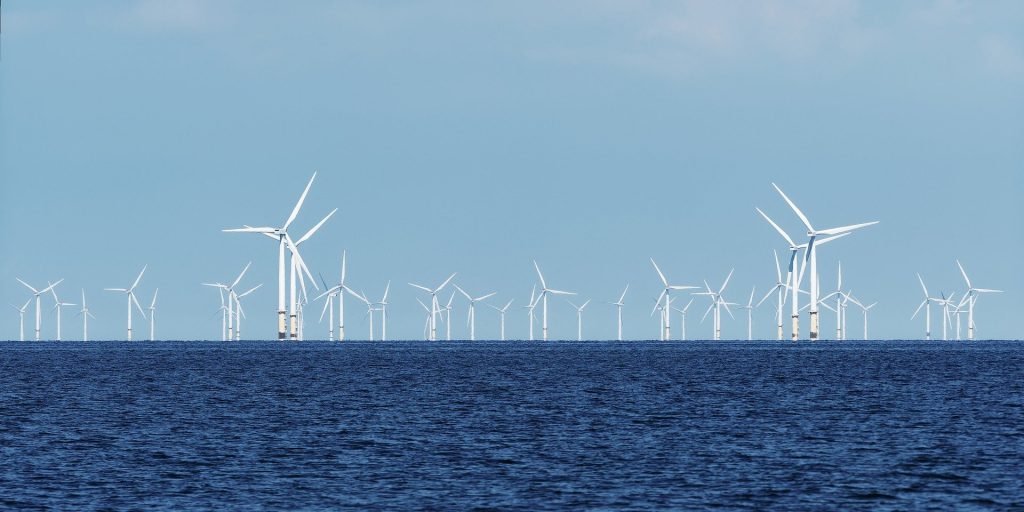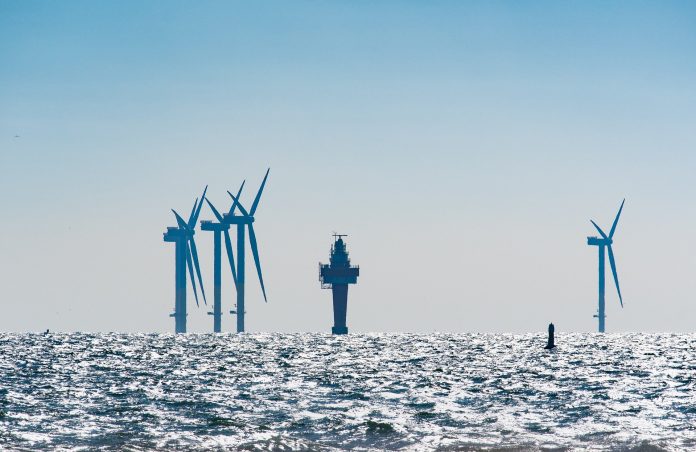Vindeby experience suggests every offshore windfarm today could close before 2050 – so we need to plan ahead.
2021 has been something of a watershed in renewables investment. The Middle East and North Africa is now spending more on renewables than oil or gas and the IPCC’s recent report on the climate emergency makes it clear that action cannot be delayed. But in the race to reach Net Zero, we need a plan for offshore windfarms that will close down before 2050.
The first ever offshore windfarm
Vindeby was the world’s first offshore windfarm, adapting onshore turbine technology for offshore use by sealing towers and controlling humidity with air-conditioning. Built off the coast of Denmark in 1991, those innovations paved the way for a global industry by enabling the machinery involved to survive and thrive in the corrosive conditions offshore. And then it closed in 2017 after just 26-years of service.
Technology has advanced since 1991 but that may make the challenge ahead even greater. For example, as Vindeby closed, Dudgeon opened off the east coast of England and the scales had clearly changed in ways that make eventual decommissioning a serious issue.
Vindeby’s eleven turbines had a “nameplate” generating capacity of 4.5MW and an operational capacity factor of just over 20%. So its closure was a relatively small dent in Denmark’s power supply. Dudgeon’s 67 turbines, on the other hand, make for a nameplate generating capacity of 400MW and an operational capacity factor of almost 50%.
As a result, the annual energy output of Dudgeon is around 200 times that of Vindeby and Dudgeon is by no means the largest of recent installations. So when time comes to close these larger windfarms they will leave a far greater renewable energy gap.
Extending operational life
When offshore windfarms were small and made up only a minor part of a nation’s energy mix, decommissioning and replacing them appeared to be a reasonable plan. Now that windfarms have grown to the extent that an individual windfarm is a significant power source, that plan probably needs to change.
Extending operational life is complicated though. Arup are one of a number of engineering firms working on new technologies to help better monitor foundation health and thus enable repairs and maintenance to be well-targeted and cost-effective.
“Foundations are the only major windfarm component that can’t be replaced, and maintaining their condition is essential to prolonging a windfarm’s operational life.”
George Walker, offshore wind asset management lead at Arup
To achieve that, Arup is now working with digital monitoring systems that will help asset owners identify risks accurately and undertaken maintenance efficiently. That matters because foundations are now in much deeper waters – figuratively and literally.
The changing locations of windfarms
Vindbey was located just one mile from shore, with a maximum sea-depth of four meters. Dudgeon is 20 miles from shore and sits in seas up to 25 meters deep. That is neither the furthest nor deepest windfarm either.
The world’s largest offshore windfarm is Hornsea Phase 1, which opened this year. It sits 75 miles from the English shoreline. Hywind off the Scottish Highlands sits in water depths of 125 meters. That can make maintaining foundations extremely difficult, dangerous and costly – which in turn makes extending windfarm life complicated.
If Hywind or Dudgeon are to help the UK achieve Net Zero in 2050, they will need to be operational 33 years after they opened. Hornsea Phase 1 would be 29 years old too. That means all of them would be older than Vindeby was when it closed, though perhaps that’s not such an unlikely prospect for what is now a more established sector.
The normalisation of offshore wind
On shore just a few miles south of Dudgeon is Sizewell B, one of the UK’s nuclear power stations. That one piece of infrastructure has been operational since 1995 and will continue to run until 2035. More importantly, there are already investment plans to extend its life to sixty years – keeping it running until 2055.
This approach to big infrastructure is well-established. Extending rather than building something new is often the cost-effective option because of the large sums involved in new facilities. Once Hornsea Phase 2 is built, that single windfarm will have a capacity three times the size of Sizewell B, so extending its operational life will become just as big an imperative.
Still, even the best maintained foundations will need decommissioning eventually…
Floating offshore windfarms
Floating windfarms have the potential to one day cost less and last longer than conventional offshore windfarms precisely because they move away from using conventional foundations. So while Arup prepares to deploy new technology that will keep foundations operational for longer, they are also working to support a floating future.
That future may be upon us. Hywind became the first partly floating offshore windfarm in 2017 thanks to its five floating turbines. Just like Vindeby in 1991, its floating capacity is relatively small at just 30MW. The only other operational floating windfarm today is Windfloat Atlantic, 20km off the cost of Portugal. That has only a 25MW capacity but as Vindeby demonstrated, a small start can lead to rapid change.
“The pace of technological innovation that has propelled the offshore wind sector so rapidly over the last decade has been staggering.”
Henrietta Ridgeon, UKIMEA offshore wind leader, Arup
Given how far conventional offshore windfarms have come in thirty years, it is not implausible that by 2050 we could see significant floating capacity replace conventional offshore windfarms, at least for new installations. As industry gears up for the Global Infrastructure Conference and then COP26, however, it must address one way or another, the Net Zero risks of renewables decommissioning before 2050.



















